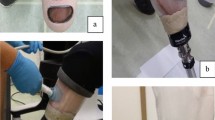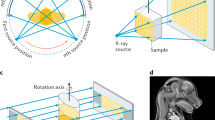Abstract
OBJECTIVE: To compare bone mineral and body composition results of two dual-energy X-ray absorptiometry (DXA) instruments from the same manufacturer.
SETTINGS: The Medical departments of Sahlgrenska University Hospital, Göteborg and University Hospital, Uppsala, Sweden.
DESIGN: Unique aluminium spine phantoms (Phant A and B) delivered with each DXA machine (DXA-A and DXA-B) were cross-checked on the other machine by using the ‘AP spine mode’. Eight adolescents were examined on both instruments within 5 h to ascertain total body variables by using standard, as well as extended, modes of analysis. All these double-examinations were undertaken on two occasions, before and after exchange of a detector on the DXA-B.
SUBJECTS: Four males and four females aged 15.4–19.2 y with normal body weights, were examined on both occasions. On each occasion, the first examination was performed in Göteborg on four individuals and in Uppsala on four individuals.
RESULTS: On the first occasion the phantom measurements resulted in much lower bone mineral density (BMD) values on the DXA-B than on the DXA-A. Later it was detected that a so-called R-value and the corresponding ‘%-fat’ value were out of range on the DXA-B. After exchange of detector, the difference in phantom BMD-values between the two machines had diminished. On the first occasion in vivo BMD values were lowest on the DXA-B ( P<0.01), while on the second occasion they were significantly lower on the DXA-A (P<0.05). Soft tissue differences were greater after detector exchange and as compared to DXA-A, DXA-B underestimated body fat by 3.5 kg (13.2 vs 9.7 kg, P<0.001) and overestimated lean tissue mass by 3.8 kg (47.1 vs 50.9 kg, P<0.001) on the second occasion.
CONCLUSIONS: The differences in results between two apparently identical Lunar DPX-L machines were not acceptable. In multicenter studies, it may be necessary to standardise results of participating machines into results of one machine by means of regression equations obtained by examining subsamples of individuals on one master machine and other participating instruments.
This is a preview of subscription content, access via your institution
Access options
Subscribe to this journal
Receive 12 print issues and online access
$259.00 per year
only $21.58 per issue
Buy this article
- Purchase on Springer Link
- Instant access to full article PDF
Prices may be subject to local taxes which are calculated during checkout
Similar content being viewed by others
Author information
Authors and Affiliations
Rights and permissions
About this article
Cite this article
Lantz, H., Samuelson, G., Bratteby, L. et al. Differences in whole body measurements by DXA-scanning using two Lunar DPX-L machines. Int J Obes 23, 764–770 (1999). https://doi.org/10.1038/sj.ijo.0800905
Received:
Revised:
Accepted:
Published:
Issue Date:
DOI: https://doi.org/10.1038/sj.ijo.0800905
Keywords
This article is cited by
-
Regional Body Composition: Cross‐calibration of DXA Scanners—QDR4500W and Discovery Wi
Obesity (2010)
-
Fat Mass Measured by DXA Varies with Scan Velocity
Obesity Research (2002)



